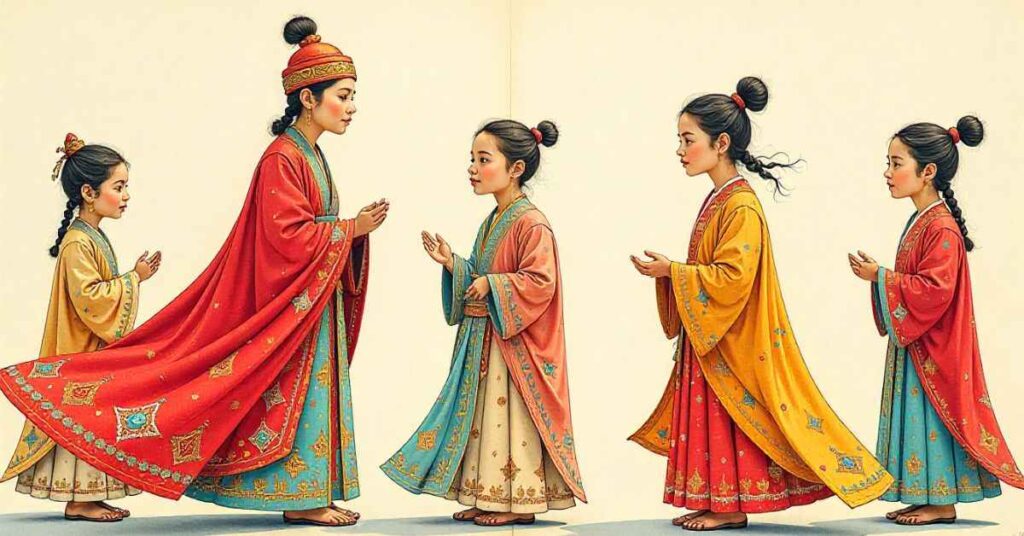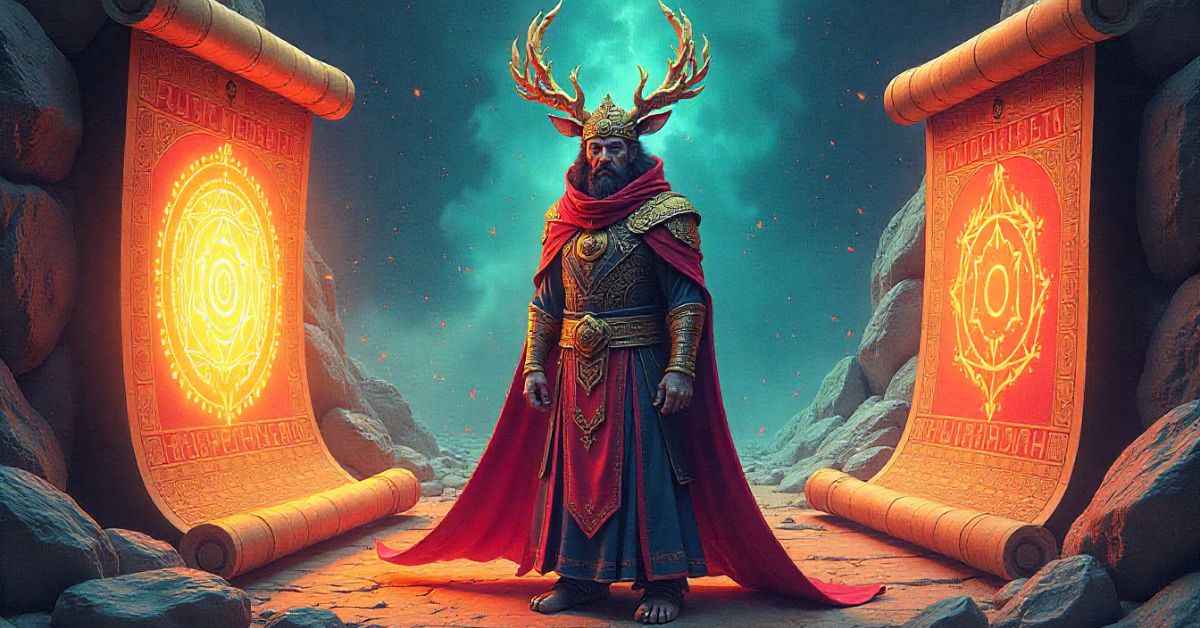Introduction
Culture is the soul of a community woven from narratives, symbols, and shared meaning. One such symbol that has quietly carried centuries of significance and spiritual weight is Pertadad. As we enter 2025, there’s growing interest in rediscovering cultural archetypes that provide a deeper sense of identity and continuity. Pertadad is one such concept, a word steeped in mythology, protection, and principled strength, with echoes that resonate in both traditional and contemporary contexts.
Though still emerging in mainstream awareness in the U.S., Pertadad is drawing attention for its poetic ties to ancestral legacies, cross-cultural storytelling, and its universal themes of endurance, guardianship, and the moral compass of a people. Often overlooked in academic or popular dialogues, It stands at the intersection of myth, memory, and culture.
In this guide, we’ll examine what it truly represents, where it comes from, how it’s used today, and why it matters in the broader cultural conversations of 2025. We will also explore its relevance in American heritage discourse and how ancient symbolism is finding renewed purpose across nations and generations.
Origins of Pertadad in Myth and Folklore
Understanding Pertadad begins with its roots in ancient narratives. Though not commonly featured in Western literature, this term emerges from oral traditions that trace back to early Eurasian, Middle Eastern, and tribal South Asian cultures. It was often personified as a guardian figure in folklore.
In several ancestral lineages:
- It was symbolized as a protective spirit that guarded family honor and moral clarity.
- Myths relate Pertadad to a memory-keeper of values, ensuring transitions between generations weren’t corrupted by moral decay.
- The term’s etymology varies slightly by region, but it typically combines words related to fortress, fatherhood, or eternal law.
For example, in one Persian myth, a figure referenced as Perdadad (similar root) stands outside the gates of the city every dusk to ward off chaos through ritual recitation.
Pertadad as a Cultural Guardian Across Civilizations
Across Indigenous cultures, the concept of a guardian or protector of moral values is commonplace. Pertadad, in its various parallels, often held protective roles but not just in the physical sense.
In various traditions:
- Native American folklore features animal totems that serve a role similar to Pertadad guardians of spirit, family, and lineage.
- Japanese traditions uphold Shugoshin, or guardians of spiritual safety, a symbolic corollary to Pertadad’s essence.
- In ancient African diasporic customs, ancestral spirits bless and guard the family tree.
| Civilization | Equivalent Guardian Concept | Shared Themes |
| Persian | Perdadad | Guardian, ritual protector |
| Native American | Animal Totems | Spiritual guiding force |
| Japanese | Shugoshin | Protection, purity, lineage |
| Ghanaian | Abusua Nyame | Family deity, legacy figure |
Despite cultural differences, these figures share a sense of sacred responsibility, continuity, and resilience.
Comparing it with Other Cultural Symbols of Protection
To better understand it’s universal value, it’s advantageous to compare it with other well-known cultural symbols.
| Symbol | Culture | Represents | Similarity to Pertadad |
| Hamsa Hand | Middle Eastern | Protection against evil | Visual guardian role |
| Dreamcatcher | Native American | Protection during sleep | Acts as spiritual buffer |
| Ancestral Masks | Central African | Guides the present via the past | Guarding legacy and identity |
Each symbol channels a different visual form but is unified in theme: protection from negative influences, preservation of truth, and spiritual continuity roles also played by Pertadad in its tradition.
Pertadad in Modern Storytelling and Media
Stories are powerful vessels for cultural knowledge, and Pertadad has been quietly making appearances in literature, games, and online lore.
Recent adaptations in indie films and folklore-based comic books feature Pertadad-inspired characters:
- A protector-spirit called “P’tad” in the 2025 film Legacy Sands reflects traits of enduring sacrifice and ancestral stewardship.
- In gaming spaces, some fantasy lore draws on the idea of a “Pertadad-class guardian” , an AI that holds digital memory for humanity after a societal collapse.
This evolution into modern formats shows how myths adapt and survive in new cultural containers.
Symbolism Behind Pertadad
Why does this concept endure in various forms across the world?
It is more than a myth; it reflects a society’s moral architecture.
- Strength: Not brute force, but unshakeable resolve to protect what’s essential.
- Morality: Pertadad embodies justice, not just law.
- Legacy: Acknowledges past truths while guiding the future.
Think of it as a living ethical compass, encoded into stories and rituals to keep societal values alive in the ever-changing tides of history.
Pertadad in Contemporary Rituals and Practices
In spiritual communities and diaspora populations in the U.S., concepts similar to Pertadad are integrated into holistic wellness, family ceremonies, and cultural naming rites.
For instance:
- Some South Asian-American families include a homage to ancestral guardians during major ceremonies.
- Modern shamanic circles include prayer sessions invoking “protector archetypes” from various cultures, it being one of the invoked terms in symbolic form.
This reclamation not only strengthens identity but also bridges generations in immigrant families.
Academic and Anthropological Perspectives on Pertadad
Anthropologists are beginning to study this term seriously. Recent academic work from the University of Chicago’s Center for Oral Traditions (2025) explores it’s as part of a broader framework of ancestral intelligence.
Key observations:
- It represents “intergenerational stewardship.”
- It mirrors modern narratives of cultural resilience often found in the African American and Indigenous movements in the U.S.
Such studies lend credibility and enhance visibility in the field of cultural anthropology.
Pertadad’s Role in Reclaiming Cultural Identity in 2025
As debates about identity, tradition, and representation grow in the U.S., the relevance of symbols like Pertadad becomes clearer.
For marginalized communities:
- Reclaiming ancient terms adds depth and dignity to their narrative.
- These symbols become tools for cultural healing and empowerment.
The rise in ancestry kits, oral history projects, and intertribal forums has brought renewed focus to ancestral figures. Pertadad becomes part of this ongoing story of rediscovery.
Visual and Artistic Representations of Pertada
Artists in 2025 are increasingly turning to forgotten symbols for inspiration.
Mediums showcasing the Pertadad motif:
- Tattoo art blends ancient text with modern design.
- Mural projects in immigrant neighborhoods showcasing protective ancestor imagery
- Virtual art NFTs inspired by “myth-informed” AI concepts
These works help make symbolic terms tactile, beautiful, and shareable especially among younger generations.
What Pertadad Means for the Next Cultural Generation
We’re witnessing a generational shift, a hunger for meaning, justice, and connectedness. Pertadad may not appear in your history textbook, but its essential duty, guardianship, legacy is more relevant than ever.
For Gen Z and Gen Alpha:
- It offers a non-material model for leadership.
- Pertadad functions as an invitation: preserve what’s sacred but don’t be afraid to evolve it.
In this way, ancient language finds new breath and new power in the conversation about who we are and who we wish to become.
FAQs
What does it mean?
It’s a culturally rich term implying strength, protection, and legacy, often linked to ancestral or mythological guardianship.
Is it tied to a specific religion?
No, it appears in various forms across many cultural narratives, not tied to one faith.
How is it relevant today?
It serves as a symbolic tool for reconnecting with heritage, especially for communities exploring identity and history.
Is it used in rituals in the U.S.?
Yes, some diaspora communities integrate it in symbolic ways during rites of passage or memorials.
How can I learn more about it’s origins?
Check academic sources, oral tradition collections, or community-led cultural preservation initiatives.
Conclusion
As we reflect on the many layers of Pertadad, it’s clear that this cultural symbol isn’t just a figure of the past, it’s a living representation of human values that transcend geography and time. In an increasingly globalized world where cultures intermingle, identities are questioned, and histories are revisited, the meaning behind Pertadad offers something timeless: a moral compass anchored in legacy and resilience.
In both folklore and contemporary society, It embodies protective stewardship, moral clarity, and intergenerational wisdom. Whether interpreted as a guardian spirit, ancestral force, or symbolic archetype, Pertadad serves as a reminder that strength doesn’t always reside in power but in principled leadership, cultural honor, and the quiet strength of continuity.
Moreover, the resurgence of interest in traditional myths and cultural protectors in modern storytelling, art, and digital platforms proves that ancient meanings can thrive in new mediums. From academic research to pop culture portrayals, Pertadad’s relevance is evolving and expanding. It now plays a vital role in how we explore identity, pass down values, and protect sacred truths across generations.


